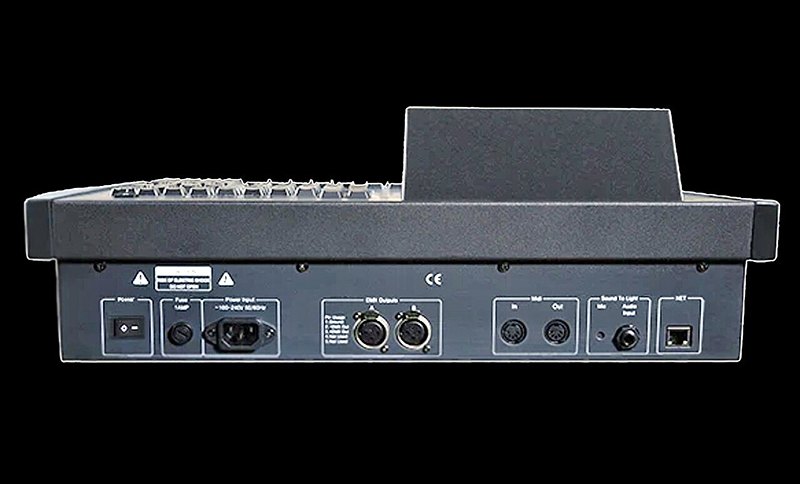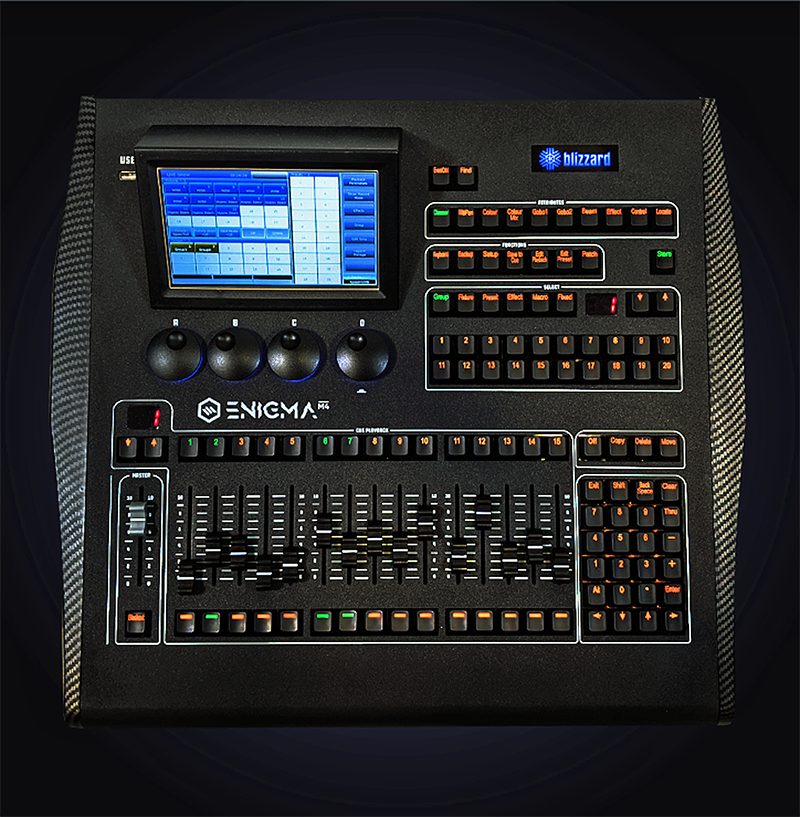
There’s a comfort that comes with a deep familiarity with a brand ecosystem. Distinct, separate bubbles of experience exist in our industry all over the place: lighting consoles, audio desks, video editing software. We as humans experience the comfort of familiarity all the time: the perfect fit of a trusted brand and model of jeans; the confidence that comes from dicing an onion with our perfectly-balanced chef’s knife; a great pair of shoes that fits just right. We’re loath to dive into the unknown, and perhaps, when it comes to a knowledge base built up over many years, this hesitancy might serve us well.
But needs change, and a sector of the market might find itself under-served by an industry with a laser focus on, say, large-scale touring concerts. Plenty of other venues and people have a need for reliable and functional lighting controllers as well — clubs, smaller touring shows, houses of worship. The market for affordable but full-featured consoles has been fairly spare, and the Enigma M4 from Blizzard, which we are looking at today, hopes to change that with a desk capable of tackling small to mid-size shows without sacrificing either features or affordability.

Getting Acquainted
Out of the box, the desk is a mid-size affair, incorporating a bank of 15 physical non-motorized faders, a programming section, 20 playback keys and a full-color touchscreen. A metal stylus is included for precision work. The buttons are backlit, and change color depending on the current function. On the left-hand side of the desk is a dedicated Grand Master fader with a blackout button, which can be latched on/off or used as a momentary. The desk includes two physical standard five-pin DMX XLR outputs on the back, with the capability of controlling up to 2,048 parameters via Art-Net expansion — one of the few consoles to offer that number of parameter control at this price point. Four backlit encoders sit below the touchscreen for adjusting parameters, one with a “press-to-click” feature. The desk can handle up to 40 fader pages, with another 20 pages for the playback keys, which makes the Enigma M4 able to handle complex shows with ease.
Patching is a simple and straightforward process, with fixtures being selected from a library of available personalities, then assigning numbers and DMX addresses. Fixtures that are patched and given user numbers starting at one will appear on the selection hard keys above the numeric keypad for easy and fast selection. These selection keys can also be used to select groups, presets, effects, individual scenes, and other console objects. Once patched, the fixtures appear on the direct selection buttons, and these keys support multiple pages. There is an extensive fixture library with thousands of personality files, and the console includes an editor for creating or editing personalities for new or non-included fixtures.
Programming is simplified somewhat from other desks you may be familiar with. The Enigma M4 runs a custom operating system on top of a proprietary ARM processor and is designed with the usual functions. Palettes can be either selection-based or global, depending on the wants of the user. Global palettes work as you might expect, applying the same attributes to all fixtures with the same personality. This works great for color, beam, and dimmer presets in particular.
Storing to playbacks is simple — just press the “Store to playback” button and then press the playback button or selection button of the playback key you would like to assign it to. Don’t be confused by the separate, large, inviting “Store” button on the console — that updates the “rolling backup” system, saving changes every time the button is pressed to one of four “rotating” backup files so the user can roll back changes easily if desired.
Of particular note is that this is not a tracking console. For those playing the home game, tracking is a feature of many modern consoles that saves only the changes from cue to cue, and “carries over” or tracks through values that do not change. Depending on how the console handles tracking, this can lead to strange looks if you go traipsing around cuelists without considering the tracking information, but it can also allow for some powerful programming in the right hands. For “cue stack” applications, the user will need to make sure they record all of the stage output into every cue. (Non-recorded attributes will simply release back to their default values.) There’s a button for doing just this, so making this change should be quite seamless and is not likely to inconvenience the console’s intended user base.
However, there are options for recording cues with only selected attributes, so that programmers can layer looks and attributes onto different faders for busking situations. For instance, you could program a fader for pan and tilt, then add others for intensity, color, gobo, and chases. Another useful feature is aligning attributes — applying attributes from a chosen point, like the center of a line of fixtures, which can be used to create attractive beam fans and color effects easily, a feature I really appreciated.

More Features
The console includes other features that users of larger desks will be familiar with, including an effects generator. Users do not create their own effects per se, but instead choose from prebuilt effects within the library. These effects can be edited to suit specific needs, and these edited effects can be saved to the user’s library for fast recall in programming scenarios. The effects library is extensive and features lots of pre-built effects that will both look good on their own and be a good base for editing for use in custom looks. There are options for movement effects like circles and waves, plus color, beam, dimmer, and other effects. I found the effects generator to offer most of the effects I’d want for a smaller show without being too overwhelming, with options for offset and single shot, among other features. It’s a very useful feature that I’m glad to see included on a console at this price point.
There are a few advanced options like split timings, but these work on cues, not across fixtures. In other words, programmers can apply split timing between parameters in a cue (For instance, your pan and tilt fade or delay can have a separate time from your color mix time.) Separate timings for each fixture could only be accomplished through heavy use of follow cues.
The console also offers MIDI timecode (MTC) input, surprisingly welcome for a console of this size. There are both hardware and software options for converting MTC to SMPTE timecode, if that’s something the user needs. There is also a TS audio interface on the rear of the desk for sound triggering. A USB-A interface sits next to the screen for attaching a USB drive for file backup and software updates.
Power in is via a PowerCON-style input and accepts voltage from 100-240VAC. Data out is via two five-pin XLR DMX connectors, and network data is via a standard Ethernet connector. An attractive dust cover and road case are both included.

At-A-Glance:
An Affordable and Powerful Option
The Enigma M4 from Blizzard is a full-featured and powerful product that aims to fill a niche long-neglected: an affordable and reliable desk with lots of features for small to mid-size shows. It should help to fill that niche nicely, especially in houses of worship, clubs, and small tours.
Enigma M4 Console
PROS: Plenty of faders and playback keys, good effects library, simplified programming, great desk for busking or cuelists. Amazing price point for the value.
CONS: Could use an additional USB port
FEATURES
- 4 universes via Art-Net, or 2 via DMX output
- 20 playback keys x 20 pages, 15 faders x 40 pages
- 7” TFT-LCD touch screen display
- Backlit buttons (red, green or yellow) & encoders (blue)
- Color picker & effects generator
- RGB & CMY color mixing palette
- Up to 1000 playbacks
- Various built-in shape generator effects
- Up to 400 groups, presets, macros, & shape effects
- 5 custom priority levels for playbacks
- Built-in library supporting over 8,000 fixtures
- Regular firmware and library updates
- Competitive price ($2,499.99, MSRP; $1,799.99, MAP)
Manufacturer: Blizzard
More Info: www.blizzardpro.com


